Reading Comprehension Text and Exercises
Dogs
Our Loyal Friends
Dogs have been around humans for many years – they were the first species to be domesticated. For over 1000 years, humans have been breeding dogs to have specific physical attributes or behaviors.
This is why today there are more than 330 different breeds of dogs. Some are even smaller than cats, while others, like the English Mastiff, are much bigger than humans.
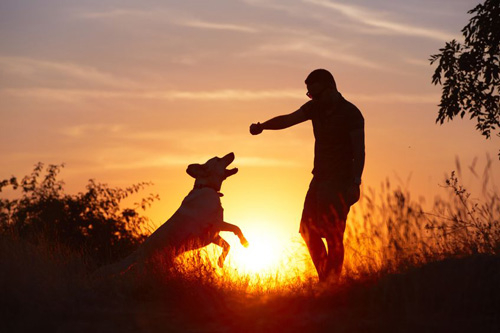
Click Here for Step-by-Step Rules, Stories and Exercises to Practice All English Tenses
A Brief History of Dogs
- Earliest domestic dogs appeared even before agriculture. Remains show that dogs were buried besides humans almost 15,000 years ago, but they had probably been domesticated thousands of years before.
- The grey wolf is the closest living relative of dogs. Some breeds like the Husky still look like wolves.
- At first, humans' leftover food attracted wolves to interact with humans. Soon after, wolves started traveling along with the nomads.
- Many ancient civilizations, the Greeks and Romans included, kept dogs as pets.
- In Western Europe, pet-keeping became particularly popular around the 15th century. Royal men started using dogs for hunting, while women preferred smaller "lap" dogs.
- In addition to archaeological proofs of the strong bond between humans and dogs, science also suggests that looking into a dog's eyes releases a social bonding hormone, a substance called oxytocin.
- Today, dogs perform so many tasks for humans, including hunting and assisting the police.
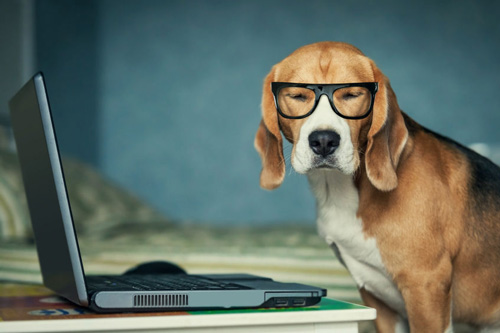
Beagle
Nowadays, beagles are popular pets, although they were originally bred for hunting, especially for tracking rabbits. Because they are excellent scent hounds (dogs with particularly good and sensitive noses), beagles are also employed to detect prohibited food imports.
Besides having an expert nose, the beagle is very active and fun loving. It is rather difficult to housetrain them, and it can even be dangerous to leave them alone. They get bored very easily, so it is very likely they will start howling and digging around if they are alone.
All in all, the brown and white beagle with floppy ears is an independent and stubborn dog, yet friendly to everyone and so easy to love.
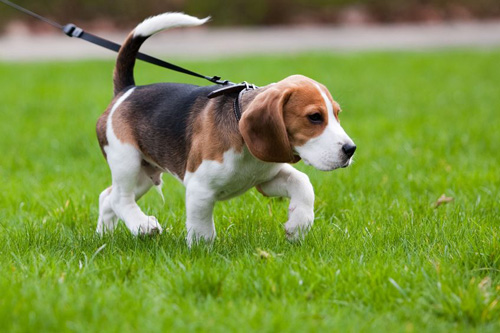
Siberian Husky
The unique wolf-like looks of this beautiful breed make the husky a very popular pet. There are different kinds of huskies, but most often they will be either black or grey, and sometimes red. Huskies often have sky blue eyes.
This breed is commonly used for sledding, whereby several dogs pull a sled to ease the travel in cold areas covered with snow. Of course, huskies can be kept as pets in places that are not so cold, although it is recommended to still keep them very active.
Because they are very curious, they can be taken on longer hiking trips. Even though they are quite big, these dogs are friendly and perfect for young children.
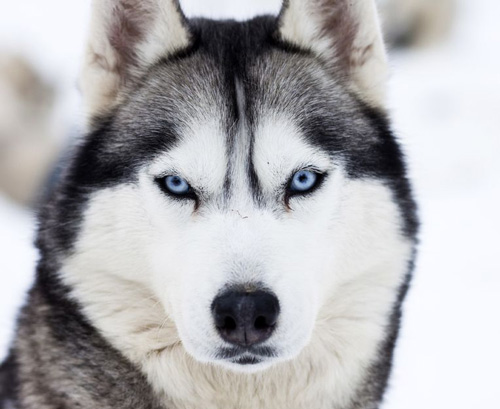
Pomeranian
The tiny, fluffy Pomeranian is one of the breeds which were made popular by the royalty. In the United Kingdom, Queen Victoria was fond of this particular dog. They were once large sled dogs, but have constantly been bred to be smaller.
Nowadays, they weigh only three to seven pounds. But, the size should not fool you – the Pomeranian is not very dog-friendly, and is known to have the courage to attack much larger dogs. They also have a very loud bark, and will always notify you when someone new enters the house. Warm weather bothers them, so they should be kept indoors.
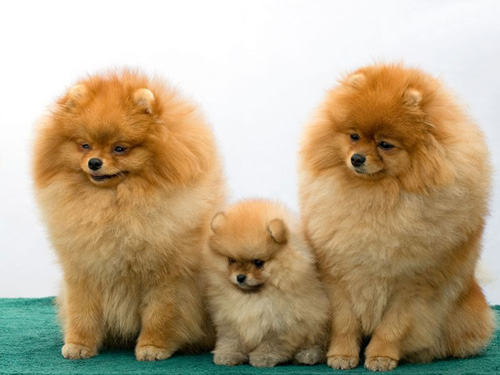
Greyhound
The skinny Greyhound has been particularly bred for racing. Their strong legs and flexible spine help them run 40 miles (64 km) per hour on average.
Today, much awareness has been raised about all the retired and abandoned Greyhounds, which is why they have become a popular family pet.
Greyhounds are believed to be one of the most ancient breeds, possibly originating from Egypt. They have very thin furs, so they require extra clothing when the weather is cold or rainy. Even though they love to run fast and chase squirrels, greyhounds are also very good at napping and being lazy.
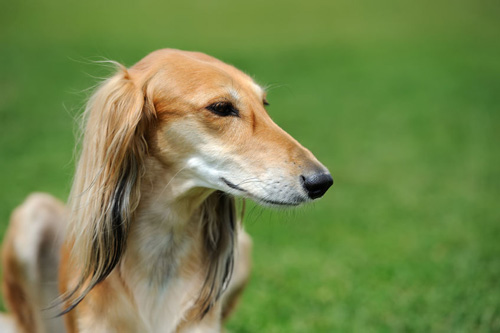
German Shepherd
These yellow and black dogs are a relatively recent breed. Their origin dates to 1899, when the Germans bred this dog to look after sheep. Over the years, their intelligence and obedience were noted, so they have been the preferred breed for military and police roles.
Since they are used as working dogs, they require solid training even as pets – daily exercise, such as throwing a Frisbee or jogging is a must.
The German Shepherd is a great watchdog and can be left outside to keep guard. Yet, they also get bored when they are alone for too long, and simply love spending time with the family.
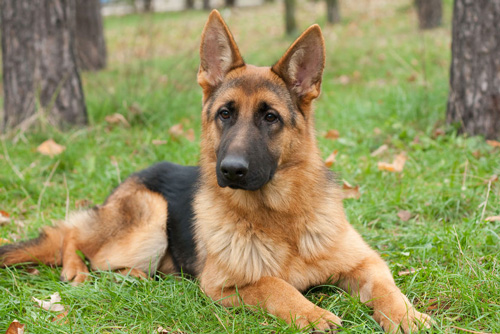
See Dogs Our Loyal Friends, Part 2
See Dogs Our Loyal Friends, Part 3
Comprehension Exercises
Vocabulary Questions
- What does "bond" mean?
- a distant relative
- a close connection
- an event, a party
- What does "awareness" mean?
- knowing that something exists
- being willing to change
- adopting a dog
- What does "stubborn" mean?
- determined not to change own ideas
- bored all the time
- born long time ago
- What does "chase" mean?
- play with animals
- learn a new skill
- run after someone to catch them
- What does "howling" mean?
- jumping around
- digging a hole
- making a long, sad sound
Collocation Questions
- Much awareness has been ___________ about abandoned Greyhounds.
- increased
- raised
- boosted
- The German Shepherd likes to ___________ guard.
- make
- watch
- keep
- The size should not ___________ you – Pomeranians are small, but fierce.
- bluff
- fool
- cheat
- Beagles are good at ___________ prohibited food imports.
- detecting
- identifying
- recognizing
- Wolves are dogs' closest living ___________.
- family
- cousins
- relatives
- Queen Victoria was fond ___________ Pomeranians.
- to
- for
- of
- Dogs have been bred to have specific physical ___________.
- attributes
- distinctions
- marks
- The Greyhound has a very ___________ spine.
- elastic
- bendable
- flexible
- Wolves were attracted to humans because of ___________ food.
- leftover
- old
- spare
- Beagles are excellent ___________ hounds.
- nose
- scent
- smell
Wh Questions
- What breed has deliberately been made small?
- the English Mastiff
- the Pomeranian
- the Beagle
- Who likes to employ German Shepherds?
- royal families
- circuses
- the police
- Why have people started adopting adult Greyhounds?
- because they are abandoned when they stop racing
- because adult Greyhounds are cheaper
- because they are great watchdogs
- Where are Huskies used for sledding?
- in deserts
- only in Siberia
- in cold and snowy areas
- How can Beagles detect prohibited food imports?
- with their noses
- with their ears
- with their eyes
Evaluating Statements
- Based on the information in this lesson, which statement is true?
- Greyhounds should not be left outside when it is warm.
- Pomeranians should not be left outside when it is warm.
- Based on the information in this lesson, which statement is false?
- Huskies and Beagles are very active.
- Huskies are very active, but Beagles love to sleep.
True or False?
- Based on the information in this lesson, is the following statement true or false?
"First dogs were domesticated because people needed them for agriculture." - True
- False
- Based on the information in this lesson, is the following statement true or false?
"The Pomeranian is brave enough to attack a large dog like the Husky." - True
- False
Answer Key
1. B | 2. A | 3. A | 4. C | 5. C | 6. B | 7. C | 8. B | 9. A | 10. C | 11. C | 12. A | 13. C | 14. A | 15. B | 16. B | 17. C | 18. A | 19. C | 20. A |21. B | 22. B | 23. B | 24. A
Get Updates, Special Offers, and English Resources
Download your FREE GIFT (the first two chapters of
English Short Stories Book and Workbook)
as soon as you join!

By submitting your email, you consent to receiving updates and newsletters from us and to the sharing of your personal data with third parties for the purposes of sending you communications. We will not spam you. You can unsubscribe at any time. For more information, please see our privacy policy.





